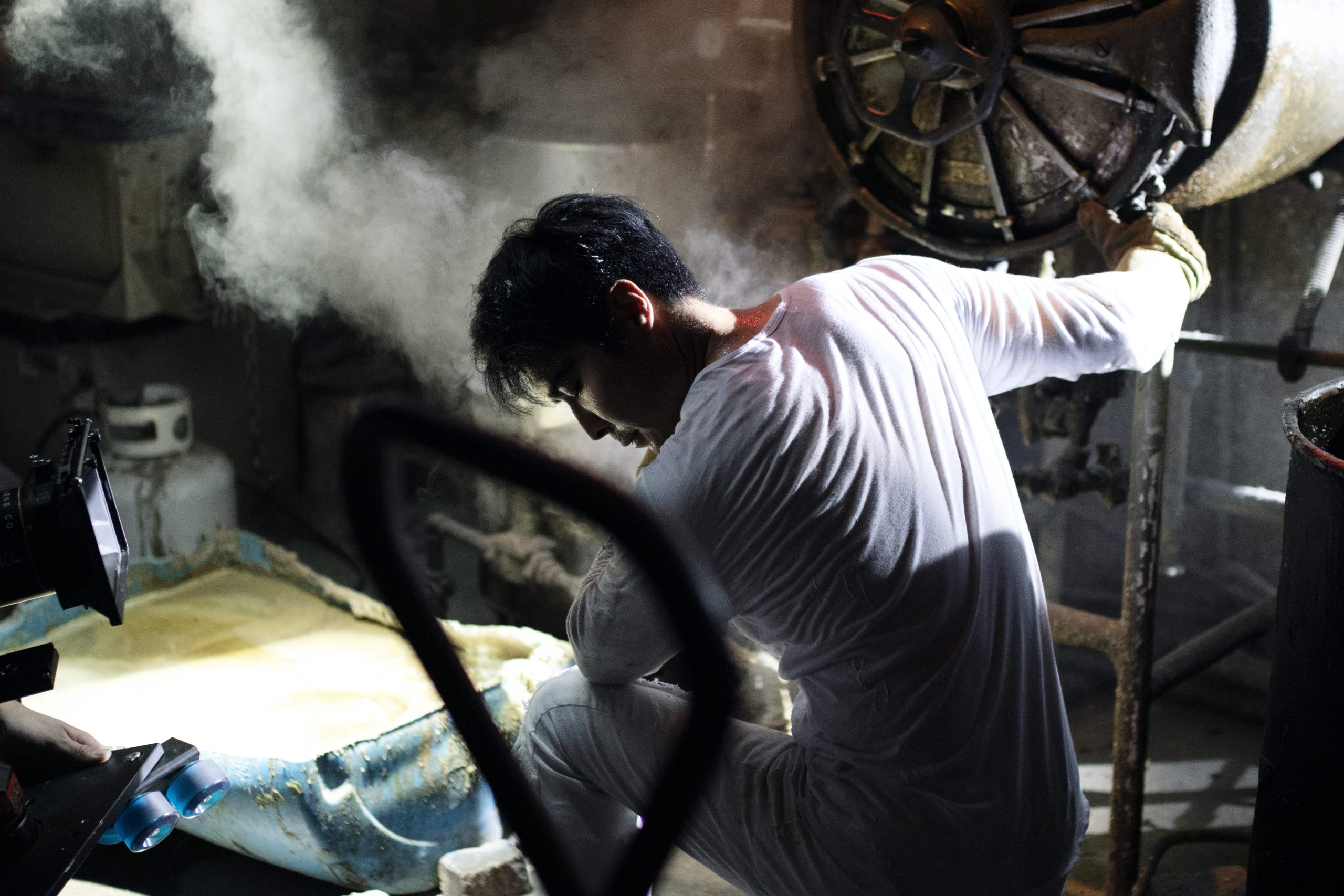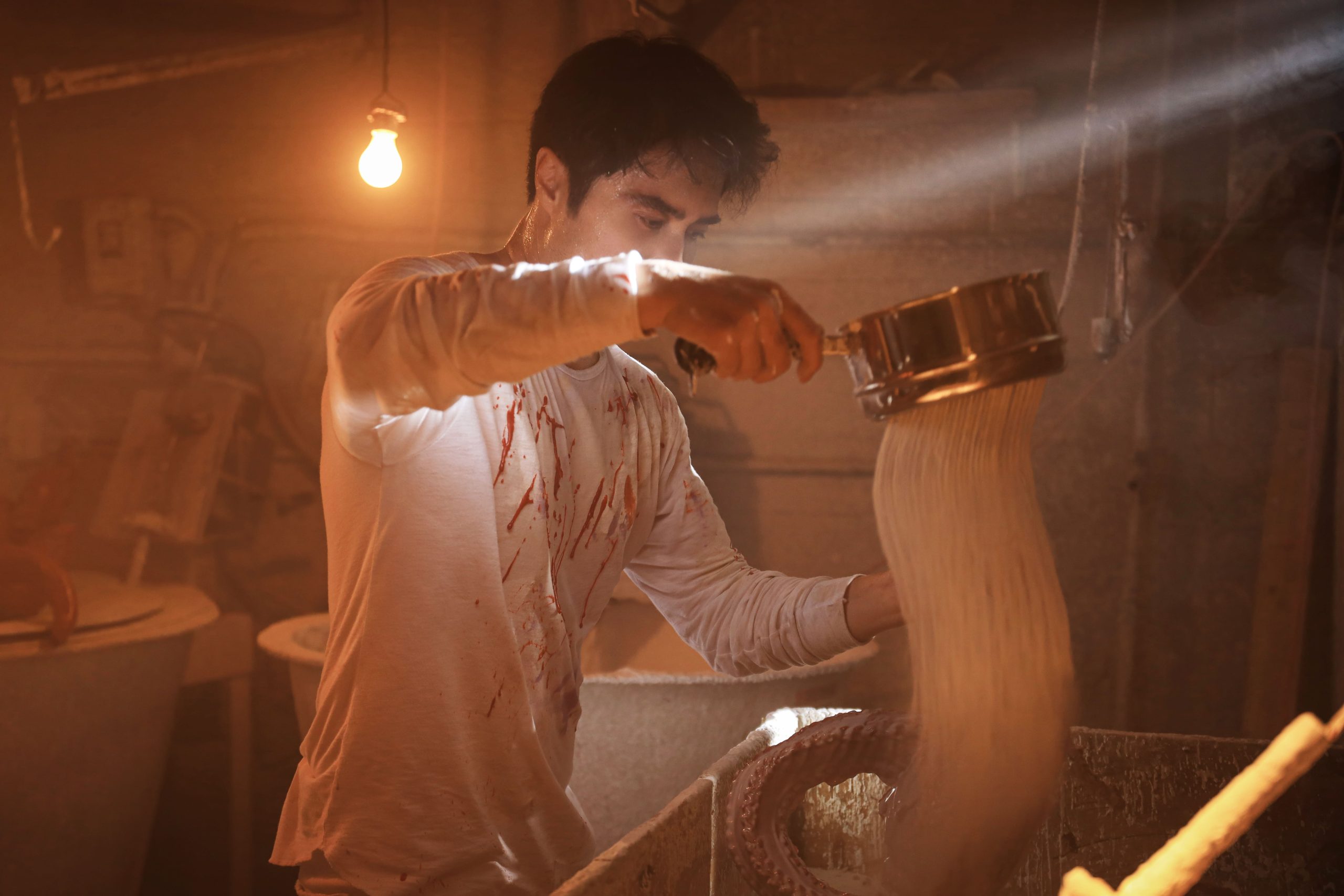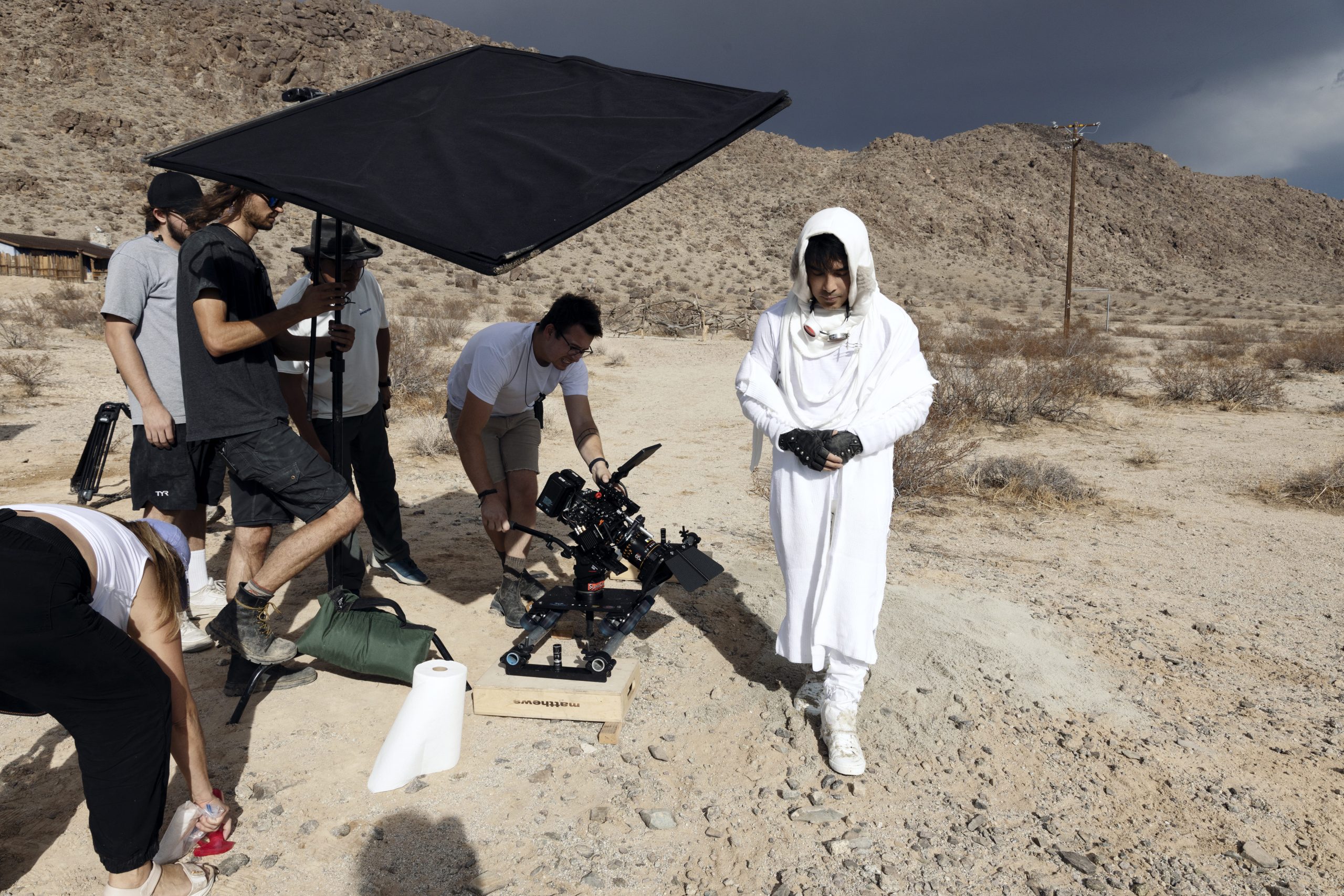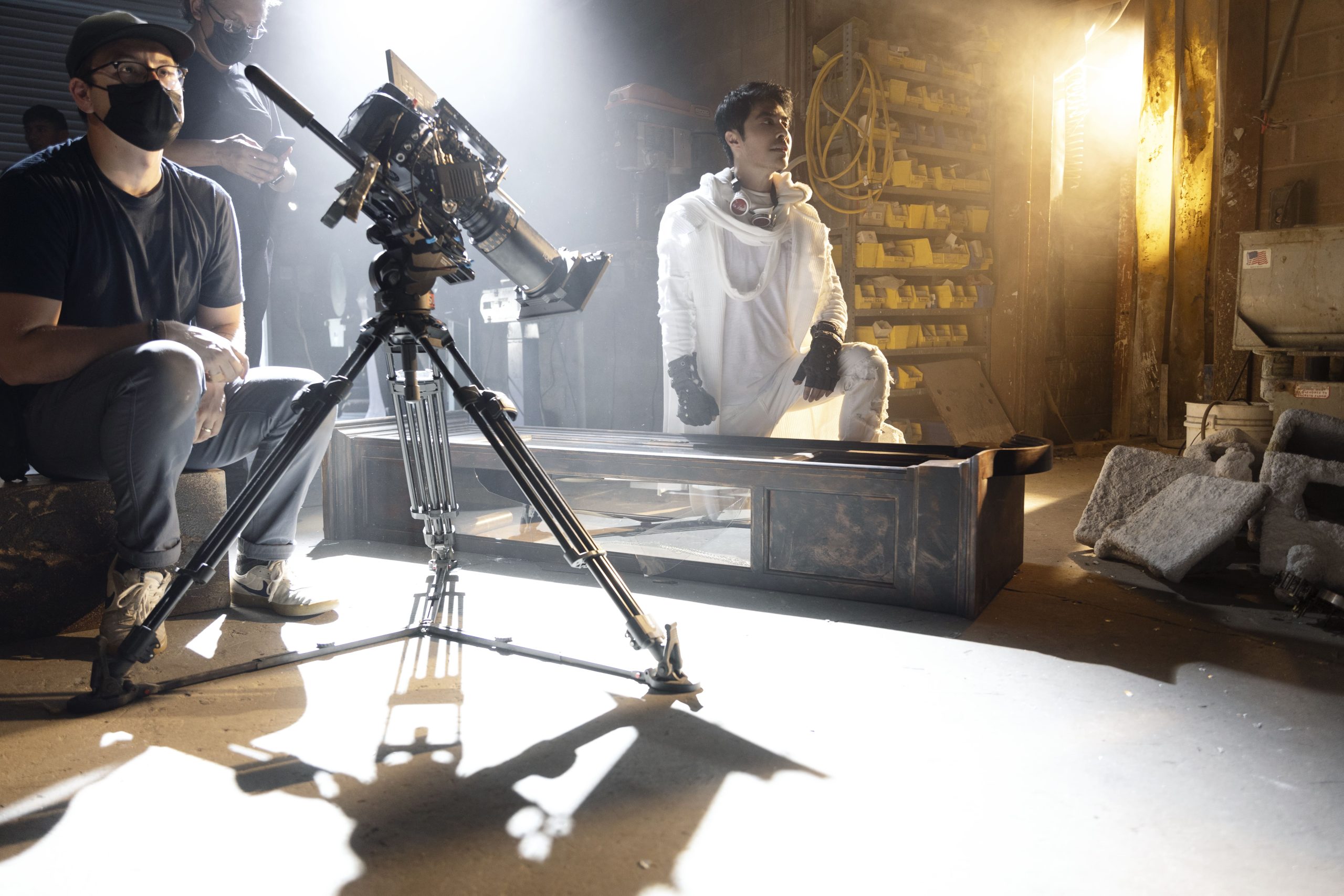BY TERESA GRECO
Art is a medium that transcends conventional boundaries and has the power to evoke strong emotions and explore profound ideas. Sir Daniel Winn, a world-renowned modern Renaissance artist, has mastered the art of merging seemingly opposite realms to create thought-provoking works that push the boundaries of artistic expression. By seamlessly blending art with philosophy, spirituality, and mathematics, Sir Daniel aims to explain the reason for human existence within the Universe.

“My art communicates the inherent dichotomy between reality and perception, between the physical and the spiritual realms. It also looks at the meaning of life. Through my visual language, I try to explain why we exist, why we are here and what our purpose is.” – Sir Daniel Winn
Sir Daniel Winn is an internationally recognized blue-chip artist, fine-art curator, awarded entrepreneur, and highly respected philanthropist. His latest artistic achievement is his mesmerizing short film Creation, a visual masterpiece that brings his philosophy of Existential Surrealism to life. Written by Randall J. Slavin, directed by Angel E. Vera and produced by Georges N. Chamchoum, the film explores the circuitous nature of life and examines the unseen wonders beyond the naked eye. “The award-winning short film is an artistic philosophical essay interpreting universal truth. It’s very profound with many symbolisms,” explains Sir Daniel. Through cinematic language, captured by award-winning director and cinematographer Jordan Schulz, the film communicates the dichotomy between reality and perception, the physical and spiritual realms. Through the medium of visual storytelling, Creation delves deep into the duality of life through the profound impact of art
With its avant-garde style and non-linear storytelling, Creation immerses viewers in a sensory experience like no other. Dialogue is eschewed entirely, relying solely on the power of visuals to communicate the protagonist’s journey and emotions. The film’s visual language is an amalgamation of cinematography, art, music, dance, light, and shadows, each element carefully orchestrated to evoke specific emotions and spur deep introspection.
Time serves as a central motif throughout the film, symbolized by a ticking clock present in several scenes. The phrase “Creation begins where destruction ends” appears intermittently, acting as a textual anchor for the film’s overarching narrative and thematic exploration.

At the heart of the film lies The Artist, played by Sir Daniel Winn himself. The character embarks on a transformative journey guided by enigmatic visions and fleeting flashes of memory. Along this path, The Artist encounters various symbolic elements, each carrying profound meaning. A chair shaped like an egg represents birth, renewal, and the cyclical nature of life. Wings, reminiscent of both angelic and avian forms, symbolize freedom, spirituality, and the potential for transcendence. A circular portal acts as a visual metaphor for the interconnectedness of past, present, and future, blurring the boundaries of time and space. “I was part of the film as the main protagonist and was heavily involved in the post-production as well, making sure that the imagery, symbolism, music, sound, and every second of the short film was what I envisioned for my artistic philosophical essay,” shares Sir Daniel.
The film draws significant inspiration from Taoist philosophy, interweaving the symbolism of the five elements—wood, earth, water, fire, and metal—throughout its visual tapestry. These elements, which are energy in 3-D form, serve as metaphors for the patterns found in nature and serve as a reflection of the integration between humans and the natural world. Their presence further underscores the profound unity and harmony between The Artist and the Universe.
In a pivotal and climactic scene, The Artist reaches a concealed cave, an elusive and sacred space that holds profound significance. Inside, The Artist encounters the timekeepers, Grandfather and Grandmother clocks, embodiments of the relentless passage of time and the duality of masculinity and femininity. As the narrative unfolds, The Artist’s deep inner knowing of his destiny prompts him to destroy the clocks so he can create; as in every creation, there is always destruction.

Guided by his newfound inspiration, The Artist embarks on the act of creation, transforming humble elements such as dirt and clay into breathtaking works of art. With meticulous skill and profound vision, he molds and sculpts raw materials into exquisite artworks, crafting two striking sculptures of nude forms. Sir Daniel’s incredible two-thousand-pound, life-size Quantum Mechanics: Femme and Homme sculptures from his Dark Matter series are semiotically showcased in the film. The sculptures examine the quantum mechanics of Existential Surrealism through these bronze, stainless steel, and lucite sculptures. Each piece stands alone as a unique entity but also comes together as a cohesive whole, conveying a sense of motion, energy, and the expansion of space and time.
Creation embodies the essence of Existential Surrealism by inviting viewers to contemplate the contrast and interplay between opposing forces, recognize the inherent dualism in human existence, and embrace the shared connection we have with the elements and the Universe. The film highlights the dichotomies of light and dark, sun and moon, life and death, hot and cold, arid and lush, organic and inorganic, masculine and feminine. It suggests that these opposing factors are not mutually exclusive but rather interdependent and that one without the other would lack significance.
The characters of Femme and Homme, created from the same elements by a single creator, embody the duality and diversity within the human experience. The film presents a visual contrast between a Black man and a White woman, symbolizing the pervasive dichotomy of black and white you observe throughout the narrative. This serves to emphasize the exploration of contrasting elements and the notion that balance and oppositional forces coexist within nature.


The underlying theme of Creation is encapsulated in its central text: “Creation begins where destruction ends.” This text underscores the cyclical nature of existence, where creation and destruction are inseparable and interconnected. It echoes the idea of Yin and Yang in Chinese philosophy, which emphasizes the balance and complementary relationship between opposing forces. This concept of balance and unity resonates throughout the film, suggesting that despite differences in faith, sex, language, or colour, we are all interconnected and part of something greater than us.
The film masterfully reveals that the answer to the philosophical enigma of universal truth lies in our shared connection to the elements. Femme and Homme, brought to life by the artist, are created from the five fundamental elements. Each of these elements corresponds to different stages of human life: birth, growth, maturation, death, and rebirth. These elements symbolize the essential building blocks of life and highlight the interdependence between humanity and the natural world. The film suggests that we are all intrinsically linked to the elements, which in turn are interconnected with the earth, the galaxy, and the Universe. This profound connection reinforces the idea that we are all equal and part of a unified whole.
Through its artistic expression and philosophical undertones, Creation has left an enduring impact on audiences and the world of cinema. Its accolades and awards serve as a testament to its artistic brilliance and the profound resonance it has achieved. Released in November 2022, Creation has garnered critical acclaim and recognition, winning prestigious awards such as the Best Long Format Short Film at the Experimental Dance & Music Film Festival, the Best Short Film at the Montreal Film Festival, and the Best Cinematography at the Venice Shorts Film Festival. “We’re very honored that festival judges, the audience, and critics are able to understand my artwork as a philosophical visual essay through the large screen,” expresses Sir Daniel.

Another of the film’s notable achievements is its ability to communicate without dialogue, relying instead on the universal language of music and visual storytelling. This deliberate choice allows Creation to transcend cultural and linguistic barriers, ensuring its message can be observed and understood by audiences around the globe. The biggest challenge for a film without dialogue is maintaining the viewer’s interest and stunning audio and visuals alone won’t be enough for the feature-length film that is already in development. Sir Daniel remarks, “That means there needs to be a fair amount of complexity in the story itself. Meaning our creative team, consisting of award-winning director and cinematographer Jordan Schulz and writer Andrew Creme, will need to take an innovative approach that transcends modern storytelling.”
Creation emerges as a deeply immersive short film, offering a unique and introspective lens through which to explore the philosophy of Existential Surrealism. Through a fusion of hypnotizing visuals, evocative music, and intricate symbolism, the film invites audiences to delve into the depths of their own souls and contemplate the intricate tapestry of existence. Creation stands as a testament to the transformative power of art and the boundless possibilities that lie within the realm of human creativity.
